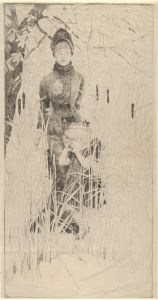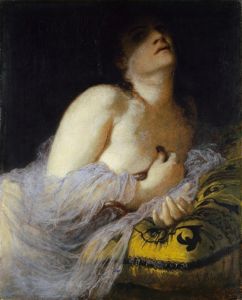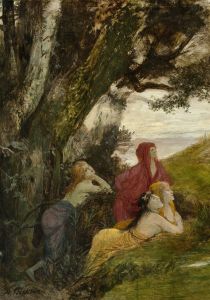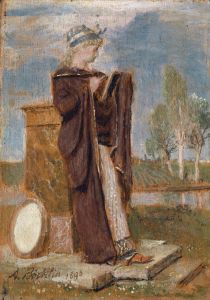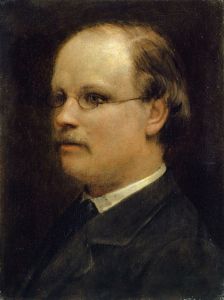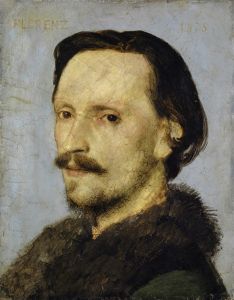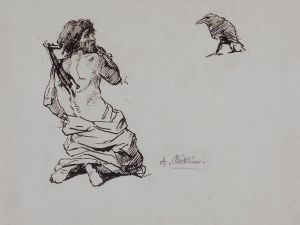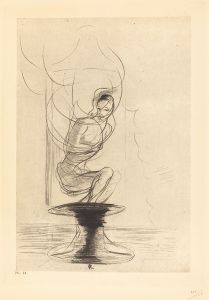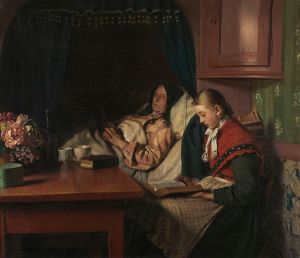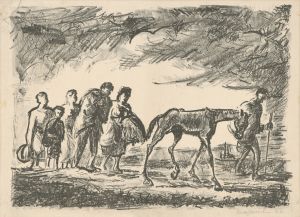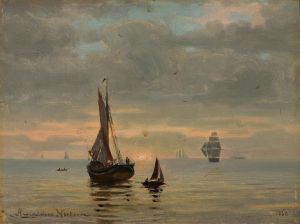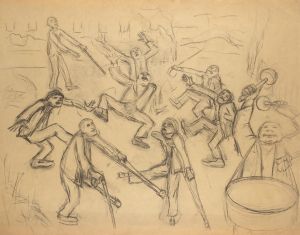
Destroyed House near Kehl
A hand-painted replica of Arnold Böcklin’s masterpiece Destroyed House near Kehl, meticulously crafted by professional artists to capture the true essence of the original. Each piece is created with museum-quality canvas and rare mineral pigments, carefully painted by experienced artists with delicate brushstrokes and rich, layered colors to perfectly recreate the texture of the original artwork. Unlike machine-printed reproductions, this hand-painted version brings the painting to life, infused with the artist’s emotions and skill in every stroke. Whether for personal collection or home decoration, it instantly elevates the artistic atmosphere of any space.
Arnold Böcklin, a Swiss symbolist painter, is renowned for his evocative and often mysterious works that blend mythological themes with a deep sense of nature. One of his lesser-known paintings, "Destroyed House near Kehl," is a compelling example of his ability to convey emotion and narrative through landscape.
"Destroyed House near Kehl" was painted in 1870, during a period of significant turmoil in Europe. This painting captures the aftermath of destruction, likely influenced by the Franco-Prussian War (1870-1871), which had a profound impact on the regions of France and Germany, including the area around Kehl. Kehl, a town located on the Rhine River near the German-French border, witnessed considerable conflict and devastation during this time.
The painting depicts a desolate scene with the ruins of a house, its structure partially collapsed and surrounded by debris. The landscape around the house is barren, with a few leafless trees standing as silent witnesses to the destruction. Böcklin's use of muted colors and dramatic lighting enhances the somber mood of the scene, emphasizing the sense of loss and abandonment.
Böcklin's technique in this painting is characteristic of his broader body of work. He employs a meticulous attention to detail, particularly in the textures of the ruined building and the surrounding landscape. The composition is carefully balanced, drawing the viewer's eye towards the central subject of the destroyed house while also allowing the surrounding environment to contribute to the overall narrative.
The painting reflects Böcklin's interest in the themes of decay and the passage of time, which are recurrent motifs in his oeuvre. His works often explore the transient nature of human existence and the inevitable encroachment of nature upon man-made structures. In "Destroyed House near Kehl," this theme is poignantly illustrated through the juxtaposition of the man-made ruin and the natural landscape reclaiming it.
Arnold Böcklin's ability to infuse his landscapes with emotional depth and symbolic meaning has earned him a significant place in the history of art. Although "Destroyed House near Kehl" may not be as widely recognized as some of his other works, it remains a powerful testament to his skill as a painter and his sensitivity to the historical and cultural context of his time.
In summary, "Destroyed House near Kehl" by Arnold Böcklin is a poignant representation of destruction and the passage of time, set against the backdrop of the Franco-Prussian War. Through his masterful use of composition, color, and detail, Böcklin captures the somber mood of the scene, making it a notable example of his symbolic and evocative style.






